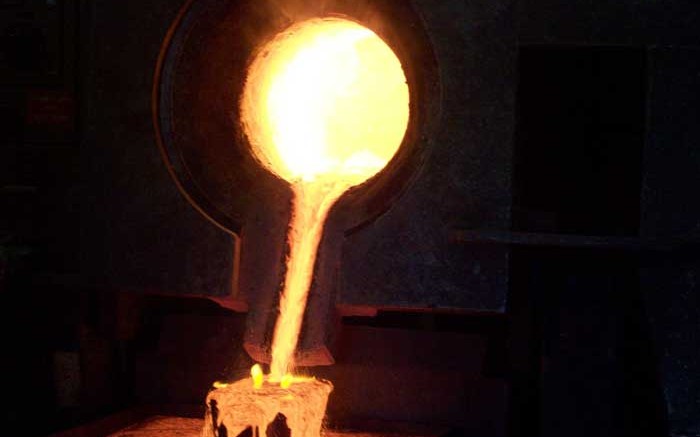A three-year mine plan for fiscal years 2015–17 has Kirkland Lake Gold (TSX: KGI; US-OTC: KGILF) focusing on grade over tonnage and margin over production.
The strategy predicts ore tonnages at 1,150 to 1,250 tons per day but increased ounces due to higher grades coming from the South Mine Complex near its Macassa mine in northeastern Ontaro, as the 5400, 5600 and 5900 levels open up with mining over the years.
“The plan calls for keeping daily ore tons constant in order to keep labour and other mining costs stagnant, with an increase in produced ounces coming from higher grades,” president and CEO George Ogilvie said in a press release.
The company expects operating costs per ounce will decrease in fiscal 2016 and 2017, with operating costs per ton staying flat. The result, the company says, will be to increase profitability and maximize free cash flow.
Kirkland Lake expects to be free cash flow positive at a current gold prices of around US$1,300 per oz. in the next two to three months. In fiscal 2015, which started on May 1, the company is expecting free cash flow generation of between $15 million and $20 million.
In fiscal 2015, the company expects all-in sustaining costs of C$1,250 to C$1,350 per oz., but over the next three fiscal years, management’s goal is to lower all-in sustaining costs to C$1,190 to C$1,250 per oz.
Ogilvie says fiscal 2015 is “off to a good start,” with the company producing 21,426 oz. gold from 52,987 tons at a 0.42 oz. per ton head grade, or 14.4 grams gold per tonne from May 1 to June 20. This is a 30% increase over and above the 0.32 oz. per ton, or 10.9 grams gold per tonne, achieved in fiscal 2013.
Management says it’s on track to achieve its fiscal 2015 guidance of 140,000 to 155,000 oz. gold at an average grade of 0.37 oz. per ton, or 12.7 grams gold per tonne, and at cash costs of C$800 to C$850 per oz.
In fiscal 2016, the company forecasts production will reach 150,000 to 170,000 oz. per year at a grade of 0.39 oz. per ton, or 13.4 grams gold per tonne, and in fiscal 2017, 160,000 to 180,000 oz. gold at a grade of 0.41 oz. per ton, or 14 grams gold per tonne.
Brian Quast, an analyst at BMO Capital Markets, called the plan “positive” and described the targets as “realistic” in a research note entitled: “Not yet out of the woods, but there’s a path now.” He noted that if the plan is executed, “it would result in a viable mine with some free cash-flow generation.”
He cautioned that the company “has a track record of missing guidance by a wide margin, and in the near-term, a negative move in the gold price could jeopardize the company’s solvency given its high debt load, and still cash-burning operations.”
Joseph Fazzini of Dundee Capital Markets said that the new mine plan is a gradual and achievable production ramp-up, and noted that “given the company’s previous track record of overly optimistic guidance, we consider this change to be yet another indication of how things have changed under new CEO George Ogilvie.” He concluded that “KGI appears headed in the right direction.”
Michael Siperco of Macquarie Research also believes the miner is on the comeback trail: “Sequential improvement, meeting targets and sustainably generating free cash flow are key catalysts for the stock, and we are confident this plan has KGI on the right track to accomplish all three.”
Siperco pointed to potential upside from exploring the near-surface resource 1.5 km from the mill, and said that with the recent completion of a $7-million flow-through financing, the company will continue exploring the area.
“If exploration is successful, processing lower-cost ore at the under-used mill could add a substantial amount of production to the mine plan,” he said.
Siperco has a 12-month target price on the stock of $5.50 per share, while Fazzini’s price target is $4.75 per share.
At press time Kirkland Lake Gold’s shares traded at $3.38. Over the last year the company’s shares have traded within a range of $2.21 to $5.05 per share.
The mine life is four years. Proven and probable reserves stand at 2.78 million tons at a grade of 0.50 oz. per ton, or 17.1 grams gold per tonne for 1.39 million contained oz. gold.
Measured and indicated resources tally 4.15 million tons averaging 0.49 oz. per ton, or 16.8 grams gold per tonne, for 2.06 million contained oz. gold. Inferred resources add 2.1 million tons at 0.54 oz. per ton, or 18.5 grams gold per tonne, for 1.13 million contained oz. gold.
At the end of March, the company had $41 million in cash.


Be the first to comment on "Kirkland Lake Gold unveils three-year production plan"